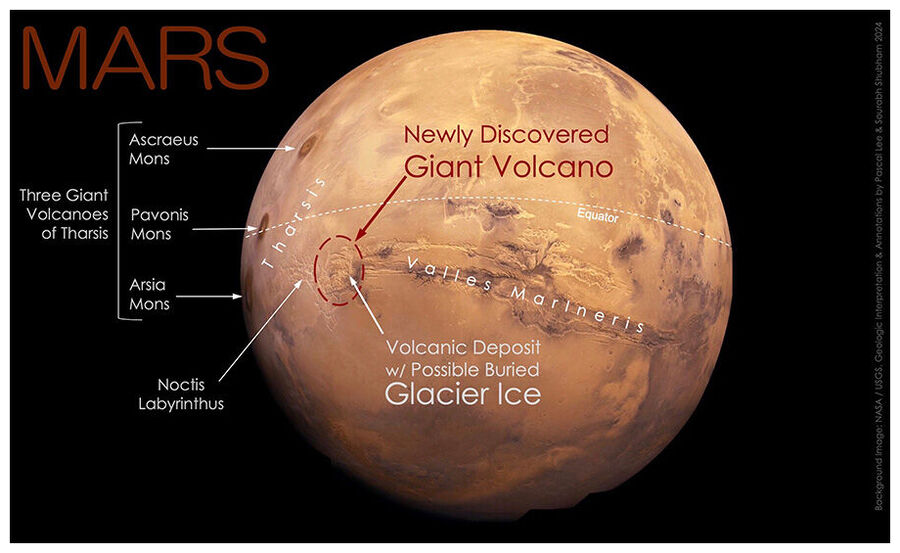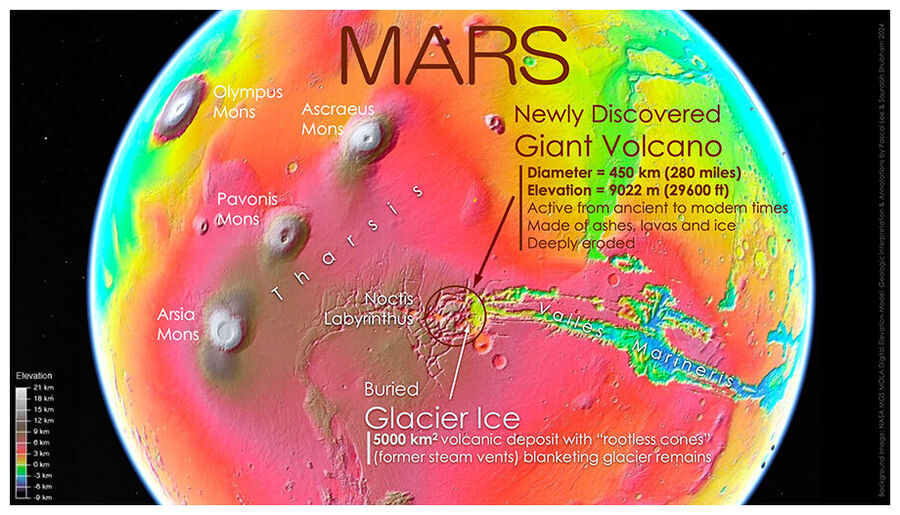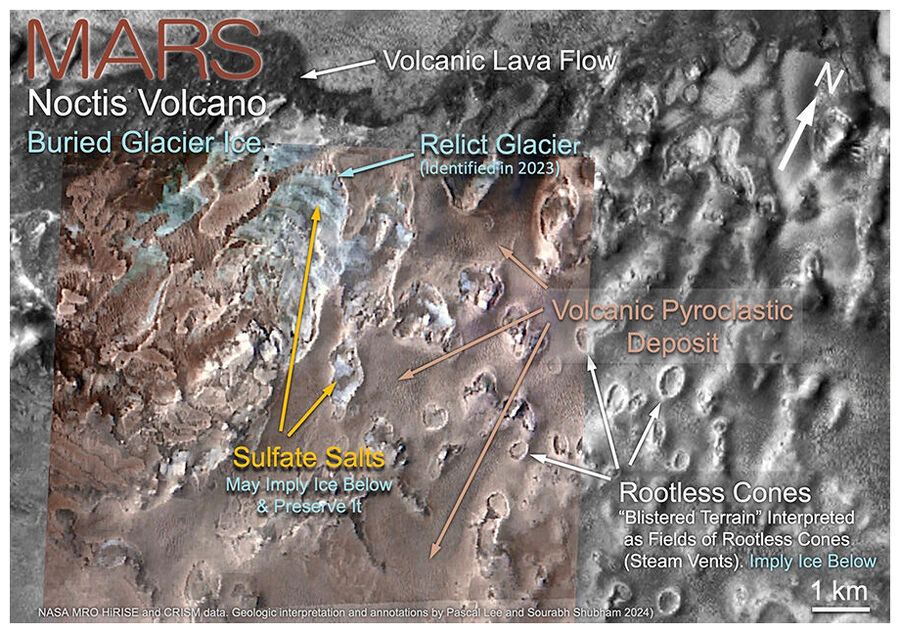
Noctis Mons is located near the Martian equator, in the eastern part of the Tharsis volcanic province, sandwiched between the vast canyons of Valles Marineris and the fractured maze-like terrain of Noctis Labyrinthus. "In fact, it is eastern Noctis Labyrinthus that is the volcano," says planetary scientist Pascal Lee (SETI Institute and the Mars Institute) who announced the finding during the 55th Lunar and Planetary Science Conference in The Woodlands, Texas. The discovery adds yet another landmark to this intriguing region.
A LARGE VOLCANO WITH A COMPLEX STORY

While it has been imaged repeatedly since Mariner 9, which orbited the Red Planet in 1971, the volcano's heavily deteriorated form prevented its detection. "It's deeply eroded and doesn't look like a beautiful cone-shaped shield [volcano], but that's pretty much what it is," Lee says. A combination of fracturing, thermal erosion, and glacial erosion has produced a jumbled landscape, with a few elevated mesas — sandwiches of lava, pyroclastics, and water ice — cut through by a network of valleys and collapsed areas.
Still, scientists pieced together several clues to reveal the formations' volcanic origin. The elevated mesas form a curved ridge that gently slopes outwards from a central summit. A caldera remnant — a collapsed volcanic crater once filled with lava — is also visible near the center of the structure. Additionally, lava flows, deposits of volcanic ash and pumice, and accumulations of hydrated minerals are scattered throughout the structure.
While some of these volcanic deposits had been spotted before, connecting all the evidence to find a giant, long-lost volcano took the scientists by surprise. "When we saw that that arc of high points reaching 9,000 meters and sloping away, that's when we thought: Could this possibly be a volcano?" Lee says. "Now that we know that is there, it's very difficult to unsee it."
It's possible other mechanisms could have formed the newfound eroded dome, such as uplift caused by raising magma underneath the region, says Alexis Rodriguez (NASA's Marshall Space Flight Center), who wasn't involved with the present study. However, Lee says that, putting together all the evidence, the giant volcano scenario is very promising. The researchers are already writing a paper detailing their findings.
The study also revealed a vast region of volcanic deposits surrounding Noctis Mons. This area is dominated by numerous, low, rounded mounds resembling blisters, referred to as rootless cones. These are believed to have formed where hot volcanic material came to rest on top of ice- or water-rich ground, causing explosive bursts of steam to pierce the surface.

"The ice is probably still there, but it's protected from disappearing by salt," Lee says.
Similarly, the researchers think that the giant Noctis Mons volcano was built like a layered cake, alternating deposits of ice and volcanic material. The slopes of the mesas show evidence of this, because there salt deposits alternate with layers of volcanic material and now-solid lava flows.
Taken together, the eroded volcano and the remnant of the glacier suggest that the volcanic blanket in this large region may be concealing a vast sheet of glacier ice beneath its surface.
"Finding this interaction between buried glaciers and magmatism is very positive, and it's connected with topics such as habitability and the likelihood of finding biosignatures," Rodriguez says. "If it's really true, it would be a very important discovery."
NEW TARGET FOR EXPLORATION
Many questions remain open about Noctis Mons. The available evidence suggests that it became active early in Mars' history, but the exact timeframe and whether it's currently active remain a mystery. The likely presence of volcanic heat and underground water, maybe continuously over billions of years, makes the location a prime candidate in the search for Martian life. From a purely geological standpoint, it also provides a cross-section view at the interior of a giant Martian volcano.
The possible presence of shallow, near-equatorial ice is also potentially useful, since it could provide a readily accessible source of water for human exploration. The proximity to Valles Marineris and Noctis Labyrinthus is likewise attractive for future crewed exploration, since these are great places to look for signs of Martian life.



A match made in... Mars...